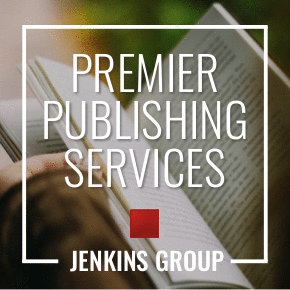Want to know more about creating a fiction book proposal? Check out the links below:
Fiction Book Proposal for Literary Agents
Start Here: How to Write a Book Proposal
Write a Book Proposal That Leaves Publishers Begging to Publish You
What Is a Book Proposal for Fiction Writers
And for the nonfiction writers, check out:
Feature
Writing a Fiction Book Proposal
How to Create an Effective Pitch

When you hear “book proposal,” most people think nonfiction. When someone is pitching a work of nonfiction, a proposal outlines includes information on the content, the author, the market, and the salability of the project. Proposals are popular because oftentimes nonfiction books aren’t finished when they get shopped around.
Fiction, on the other hand, almost always needs to be fully written before you can pitch and editor or an agent. As a result, few agents or editors require book proposals, but they can be incredibly helpful tools for both writers and publishing pros. A book proposal helps an agent or an editor learn more about an author than a two-sentence bio. It gives them insight into marketing opportunities. And it provides a snapshot of the project that saves hours of work when someone preparing to evaluate a project for potential representation or publication.
Whether or not you need a book proposal, I recommend going through the exercise. Putting together a proposal will help you hone your pitch and get a feel for being the “brand manager” of your book. A proposal makes you think like an editor, a marketer, and a salesperson all at once.
Ready to give it a try? Here are some elements that create a successful fiction book proposal (and if you’re writing nonfiction, most of these still apply!):
Logline or hook. Much like a query letter, it’s helpful to include the elevator pitch of your book in a proposal. This is the down-and-dirty, grab-your-attention info that leaves a reader wanting more. To learn how to create a strong logline, check out this article: www.dailywritingtips.com/whats-your-novels-log-line.
Author info. While a brief and quirky bio is great for the back cover of a book, agents and editors like to know as much about an author as they can up front. Provide some version of the following information:
· Social media stats
· Website and/or blog link
· Writing groups you’re involved with
· Previously published books, if applicable
· Connections with other authors or important literary figures
Note: This isn’t the place to say you met J.K. Rowling once. This is the place to mention authors, bloggers, librarians, booksellers, and literacy advocates who you know personally and who would potentially support your book.
· Writing background
Note: This isn’t the place to talk about how you’ve loved writing since you were five years old. This is the place to talk about relevant writing education or workshops, awards you’ve won, and that type of thing.
Target audience. This might be a general category, like “young adult readers” or “readers interested in historical fiction.” You don’t want your intended readership to be too narrow, but you don’t want to assume everyone will read your book. (Unfortunately, not everyone will.) It’s important to recognize who your audience is, especially as you start thinking about the next two items…
Competitive titles. Comp titles are wonderful to include in a book proposal. These are books that are similar to but different than yours, and act as great reference points for both the editor and the sales or marketing team. For example, if you were writing a WWII novel, you would want your comp titles to be other WWII titles with similar themes or plot points. *Hint: It’s great to use strong-selling books as your comps, but make sure the connection between your book and the bestseller is honest and accurate. Also, avoid comparing yourself to someone hugely famous, as that can sound like too much of a stretch.
Marketing and PR opportunities. Editors and agents never expect an author to have a full-blown marketing plan…that’s what a marketing team is for! However, it’s hugely helpful to know if an author has connections within a group of librarians or booksellers, if they can get a spot on a radio program, or if they have a newsletter with a nice subscriber base. Also, listing opportunities shows you have marketing savvy and drive, two things that will make you extra competitive in today’s crowded publishing market.
One-page synopsis. They’re a pain to write, but synopses are so, so helpful. They help editors see the arc of your manuscript and get an immediate sense of the story before diving into the text. They also help authors practice being concise and plot-oriented when summing up a novel. And yes, you can use single spacing!
Sample chapters. A proposal generally includes one to three sample chapters from your novel. This gives you a chance to polish those chapters into their best possible shape and to make sure the early pages draw the reader in. Also, most editors and agents start by reading the first 30 pages, and if they aren’t hooked by that point, they stop. Sometimes, people don’t even make it past the fist chapter, so give those early pages everything you can!
When you’ve finished writing your proposal, make sure to have a couple writer friends provide a critique. The more eyes you can get on your work, the better!
 Jillian Bergsma Manning is a contributing editor for Independent Publisher. She loves reading and writing but not arithmetic. Follow her on Twitter at @LillianJaine or on her blog at www.editorsays.com.
Jillian Bergsma Manning is a contributing editor for Independent Publisher. She loves reading and writing but not arithmetic. Follow her on Twitter at @LillianJaine or on her blog at www.editorsays.com.

